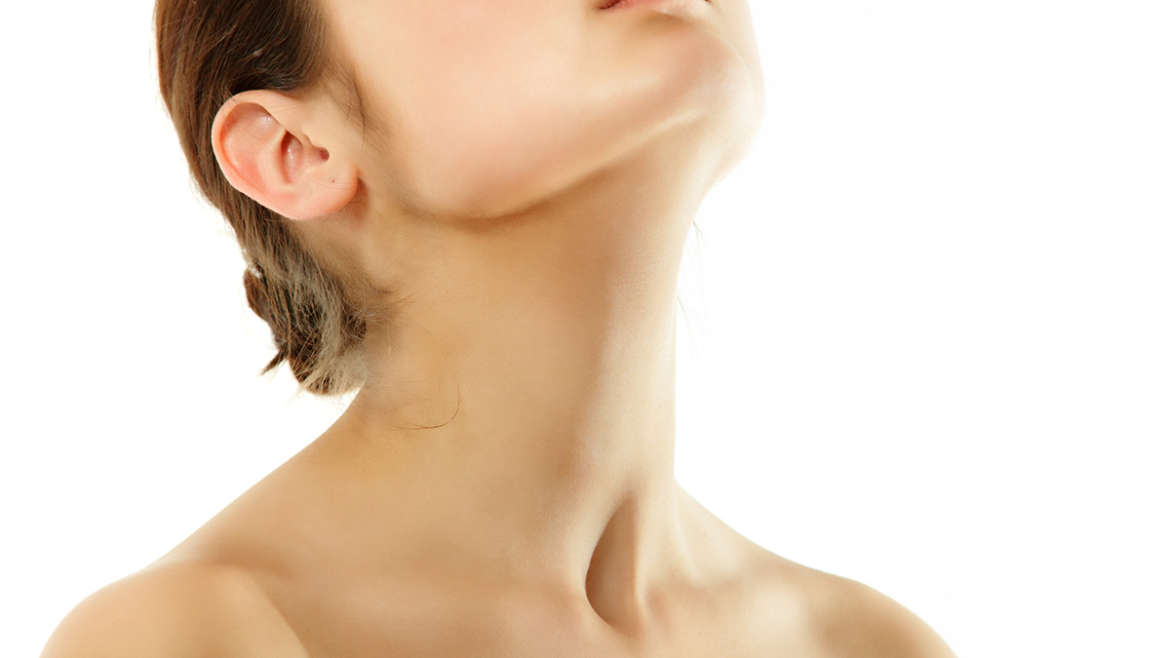Dr. Elizabeth Roche, founder of the Elizabeth Roche MD MedSpa in Bergen County, New Jersey, discusses the best treatments for an aging neck. The Medical Aesthetic Center provides patients with the most advanced procedures available to restore youth and preserve beauty.
John Maher: Hi, I’m John Maher. I’m here today with Dr. Elizabeth Roche, founder of the Elizabeth Roche MD MedSpa in Bergen County, New Jersey. The Medical Aesthetic Center committed to providing people with the most advanced procedures available to restore youth while preserving the beauty and functional health of your skin. Today, our topic is the best treatments for your aging neck. Welcome Elizabeth.
Elizabeth Roche: Thanks for having me back, John.
Effects of Aging on Necks
John: Sure. So Elizabeth, talk a little bit about what happens to our necks as we age.
Elizabeth: So as we age, the skin on our neck, and everywhere for that matter, is not producing as much collagen and elastin as it once did. And in addition, what is present starts to break down at a faster rate than what is being produced. The neck is particularly vulnerable because it is very thin skin to begin with. Unlike the skin on our face, the skin on our neck is much thinner and it doesn’t have the supporting structure such as oil glands, sweat glands, fine hairs. Therefore, aging tends to show up sooner on our necks than it does in other areas.
Treatment Options for Neck Area
John: Okay, that makes sense. So what treatments are available to help with the neck or the décolletage area?
Elizabeth: So to help build up the collagen in the neck and in the décolletage and hence to tighten skin, I offer treatments such as Ultherapy, SkinTyte, dermal fillers, neurotoxins and maintaining with products. Ultherapy is the best treatment to tighten skin other than a surgical neck lift. So that’s usually where you begin in making progress in improving the skin on your neck.
Ultherapy for Aging Neck
John: Okay, so let’s talk about each of those. But let’s start with Ultherapy then since that’s the place where you say you generally start. What is Ultherapy and how does it treat your neck?
Elizabeth: Ultherapy is ultrasound energy that’s delivered by a hand piece that glides along the skin to targeted depths where collagen is located. There’s different layers of the skin and structures under the skin and there’s collagen at different layers. So we have an ultrasound screen that’s part of the machine and I watch that to guide me to see what depth that the energy’s being delivered to. The first pass, we use transducers that target deeper collagen, the collagen that sits on top of the muscle. You could see this when you have a piece of meat, meat is muscle, and you see that white layer. That’s actually collagen on there.
John: Mm-hmm (affirmative).
Elizabeth: So that’s what we’re aiming for in the first pass. The second pass, we’ll use a transducer that targets the collagen that’s in the dermal layer of the skin or higher up in the skin. Over time, this non-laser energy that has been delivered will stimulate fibroblast cells. Fibroblast cells are the cells that make collagen. It will also tighten the existing collagen resulting in tighter skin and lifting of the skin. When addressing skin laxity in the neck, I always recommend a tightening procedure over other treatments or prior to other treatments such as neurotoxin and dermal fillers. I usually recommend them after a skin tightening procedure.
John: Okay, and you said that Ultherapy is basically like an ultrasound procedure. Does it use a wand similar to if you were pregnant and you were getting an ultrasound done to look at the baby? Is it that sort of thing?
Elizabeth: Similar to that. It is a hand piece, but it’s more of a rectangular hand piece instead of a rounded hand piece, and we use ultrasound gel and we’re gliding that back and forth to see appropriate picture and making sure the transducer is adhered to the skin correctly so that every little bit of energy gets delivered to the correct layer. Unlike a regular ultrasound, when we press the button to deliver the energy, it does cause a sensation of, some people describe it as an electrical sensation or pinprick sensation, because these ultrasound waves are all converging onto one little spot and that spot’s called a thermal coagulation point. So there is a bit of sensation to it unlike a regular diagnostic ultrasound.
SkinTyte Treatment
John: Okay. So let’s move on to SkinTyte. What is SkinTyte and how does that treat the neck?
Elizabeth: SkinTyte is a great alternative treatment to Ultherapy for tightening up the collagen in the neck. Unlike Ultherapy, a series of treatments are needed to obtain the results with SkinTyte. The laser wavelength of energy does not go as deep as the Ultherapy energy does. So SkinTyte uses laser wavelength that isn’t as deep, whereas Ultherapy is ultrasound waves that can travel deeper. Remember that Ultherapy treated collagen on top of the muscle and also in the dermal layer. SkinTyte only treats collagen in the dermal layer, so we’re not going as deep. The benefit of SkinTyte is that because it’s not as much energy going as deep, the sensation is better tolerated than Ultherapy For some patients who may be sensitive.
SkinTyte vs. Ultherapy
John: And does it work just as well or are there differences in the recovery time or anything like that between SkinTyte and Ultherapy?
Elizabeth: SkinTyte will work well over time. It’s not as strong as energy going into the skin and it’s not as deep. We’re not treating two layers, we’re treating one layer. So it may take a little bit longer to get to the end point. Whereas Ultherapy is one treatment and you wait approximately four months to see the results. Ultherapy, you need the treatment, I’d say, every two to four weeks. It might be four to six treatments to get a similar result. So it’s an alternative, but it’s a slower, not as aggressive treatment than Ultherapy.
Dermal Fillers and Neurotoxins
John: Okay, and then the next treatment that’s available to help with the neck area you said is dermal fillers and neurotoxins. Can you talk a little bit about those?
Elizabeth: Sure. So the first two treatments, Ultherapy and SkinTyte, T-Y-T-E, they’re used to give an overall tightening effect to the skin and lifting. We use neurotoxins such as Botox, Dysport and Xeomin and dermal fillers for a little bit different reasons. They can be used alone or, for the best results, they’re usually used in combination with the other two treatments, the skin tightening treatments such as Ultherapy or SkinTyte. Neurotoxins such as Botox, Dysport, or Xeomin, when injected in the proper depth, works to relax the anterior or the front layer of the neck muscle so that when the posterior or the deeper muscle contracts, it actually lifts the skin on the neck. These neuromodulator medications also help give the skin that tighter look just as it does when it’s injected into the forehead. The injections need to be repeated approximately three to four times a year on average, so it’s not a permanent fix, but just like we inject the Botox in the face, it’s an ongoing treatment.
Dermal fillers are great to fill in the superficial lines on the neck, especially those horizontal lines. I use dermal filler, specifically the ones that are specifically designed to be injected into the very top layer of the skin. We’re not doing a deep injection. We want this to be like a fine line dermal filler. It’s a great way to reduce that and correct the horizontal line that sometimes patients develop. The injections can cause bruising, but it’s definitely worth it. Some patients have this treatment once and never have to repeat it, but most patients have it done probably every six to 12 months. I always recommend that they continue with other treatments to maintain their improvements such as my skincare products.
Recommended Products
John: Right, so talk a little bit more about that. What types of products do you recommend to your patients to help to maintain the neck area maybe after they’ve had one of these other treatments done?
Elizabeth: There are three to four products that I really recommend for patients to get on a regimen to help with their skin on their neck. The first is the Elegant neck cream. My Elegant neck cream is designed to treat the delicate skin of the neck, combining antioxidants, a gentle hydroxy acid ester and a retinoid. This cream will help reduce the appearance of fine lines as well as sometimes patients get a little redness in their neck. So this helps decrease that as well and it is applied every evening. My Hyla-Peptide serum is applied in the morning. That is a serum that contains 30% hyaluronic acid. Hyaluronic acid is a naturally occurring substance in our skin that attracts and locks in moisture and this product contains 30% of that. It reduces the appearance of fine lines and wrinkles and supports the collagen. This should be followed by my UVA/UVB broad spectrum SolarEclipse sunscreen each morning. Definitely, you want to put sunscreen on before going out because sun is the biggest culprit of causing a decrease in your collagen. So you definitely want to protect your skin from the UVA and UVB rays.
Lastly, an at home mini chemical peel treatment with my Exfoliant pads are great. They contain 10% lactic, 10% glycolic and 5% salicylic acids as well as green tea. They’re perfect to use one or two times a week. Chemical peels in general help reduce fine lines and wrinkles. My Exfoliant pads are great to help with reducing fine lines, wrinkles, pigmentation problems and it gives a beautiful glow to the skin. So those are the four products I would recommend. Elegant neck cream, Hyla-Peptide serum, SolarEclipse and Exfoliant pads.
John: With the sunscreen, do you recommend that people use that product all year round or just during the summer when the sun is the strongest?
Elizabeth: Sunscreen should be used all year round on your face, on your neck, on your hands. The sun is always out when it’s daylight and even though it may not be a bright day out, the UVAs particularly are penetrating the skin and they dive deep and they break down your collagen. So using sunscreen is one of the best anti-aging things you can do, and start it early. There’s also some evidence that even indoor lighting can give off some wavelengths that break down your collagen. I tend to spend most of my time indoors, but I wear sunscreen every day when I go to work.
John: All right, that’s great advice. Well, thanks again for speaking with me today, Elizabeth.
Elizabeth: Well, thanks for having me, John. Take care.
John: And for more information about treatments for your aging neck and other treatments, visit the website at elizabethrochemedspa.com or call 201-505-1020.

